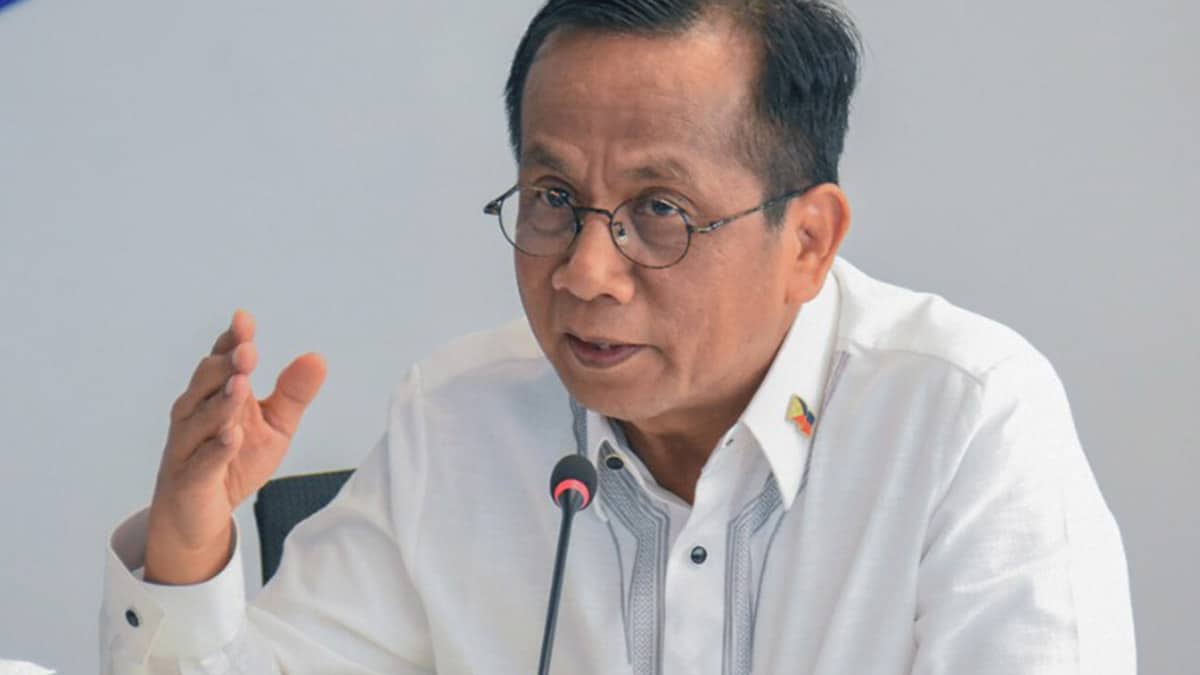
Neda Sec. Arsenio Balisacan —Photo from the Neda FB
MANILA, Philippines — “Infuriating and insulting.” This was how House Deputy Minority Leader France Castro on Wednesday described the statement the day before of the National Economic and Development Authority (Neda) classifying a household of five as “food poor” if each member spends less than P64 a day on meals.
This means an individual is not “food poor” if he has a budget of a little over P20 for each of the three meals needed daily.
“As of 2023, the monthly food threshold for a family of five is P9,581. That comes out to about P64 per person (a day),” Neda Secretary Arsenio Balisacan told senators at a briefing on Tuesday.
READ: Pinoys spending more than P64 for meals a day not food poor – Neda data
But other lawmakers present were also not buying it. “That’s for three meals, right? So it will come out to P20 per person per meal. Do you think that amount is sufficient?” Sen. Nancy Binay asked.
Castro, the ACT Teachers party list representative, challenged Neda officials to try living on P64 for a day’s food expenditure, sarcastically adding in Filipino, “What planet are these Neda people living on for them to say this?”
“This kind of statement from the Marcos administration is infuriating and insulting,” Castro said.
“What workers need is a substantial wage increase and not a magicked computation,” she stressed. “What could P20 buy? Turon or banana cue or noodles?”
Unrealistic
Senators on Wednesday also scoffed at the Neda figure.
At the continuation of the Development Budget Coordination Committee briefing, Sen. Imee Marcos questioned the official poverty threshold of P91.22 per person a day, which means an individual who earns P91.22 daily is no longer considered poor by the government.
“To my mind, (this) is entirely unrealistic given that P91 is not about to pay for a person’s basic needs—food, housing, utilities, transport, communication, education, health and clothing,” Marcos told Balisacan.
“We have to be more realistic and adjust these (amounts) because they certainly aren’t (felt) on the ground,” she added.
In fact, Marcos said, the World Bank had declared that persons earning $2.15 (P122.55 at the current exchange rate) a day or less were classified in the level of “extreme poverty.”
Senate Minority Leader Aquilino Pimentel III asked the Neda chief to submit an explanation in writing, noting that “our gut feel, which is our ‘sixth sense,’ (tells us) that it is gravely unrealistic.”
Peasant groups dared the government’s economic managers to take on a P21-per-meal challenge to see the “unrealistic” official food-poor threshold.
Go visit wet markets
“That is not even enough for a [cup of] rice and a viand in an eatery,” said Danilo Ramos of Kilusang Magbubukid ng Pilipinas (KMP).
The Amihan National Federation of Peasant Women agrees, urging Balisacan to visit wet markets and communities to see the realities on the ground.
“P64 can only buy you a kilo of rice and a piece of egg. How can an individual meet all his or her needs for the whole day?” added the fisherfolks group Pambansang Lakas ng Kilusang Mamamalakaya ng Pilipinas (Pamalakaya).
Even the Department of Trade and Industry (DTI) believes Neda’s daily food poverty figure is low, based on its price list for basic commodities.
During a House hearing on Wednesday on the DTI’s proposed budget for 2025, Castro grilled Trade Undersecretary Amanda Nograles on whether she thought Filipinos could eat three meals a day with only P64.
Update long overdue
Nograles said the DTI would “submit a report” on the matter, but cited the agency’s price data for basic food items like bread (10 pieces at P2 each, for P20), instant noodles (P7), instant coffee (P4.10 per 18 grams), and evaporated milk (P44), would already amount to a total of P75.10, or P11.10 more than the Neda estimate.
“That’s before you even consider things like vegetables,” Castro said.
At the Senate briefing, Balisacan conceded that the food poverty threshold needed to be reviewed due to the economic changes, recalling that it was at P55 in 2021 and P63 in 2022.
Basis for 4Ps
The food poverty threshold generally serves as the government’s basis for determining the number of Filipino households living below the poverty line.
These families, in turn, become eligible to receive benefits under the government’s poverty alleviation programs, particularly the conditional cash transfer scheme known as the 4Ps (Pantawid Pamilyang Pilipino Program).
“When you compute poverty thresholds using an old number which is obviously not workable anymore, P20 per meal means your poverty forecast is not accurate,” Sen. Grace Poe explained on Tuesday. —with a report from Krixia Subingsubing

